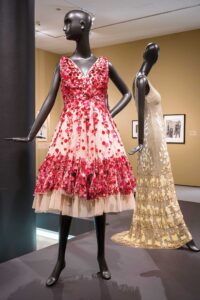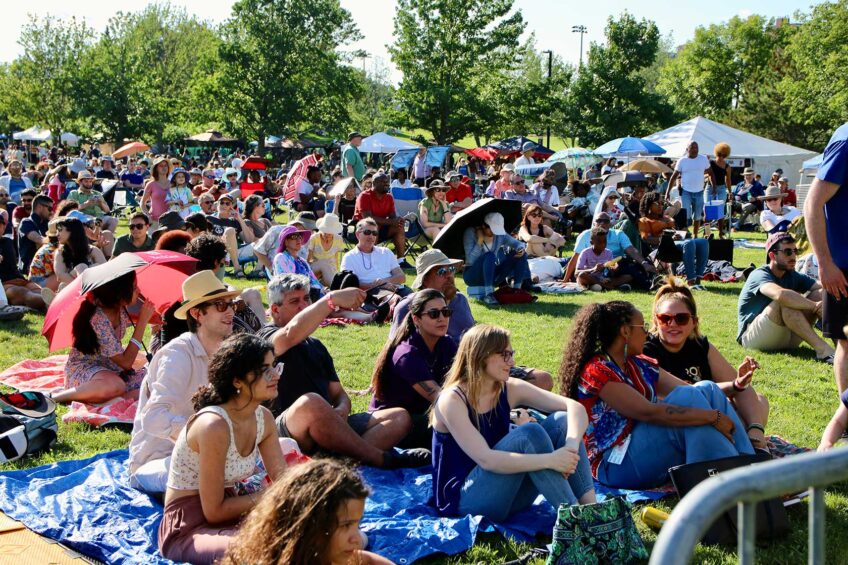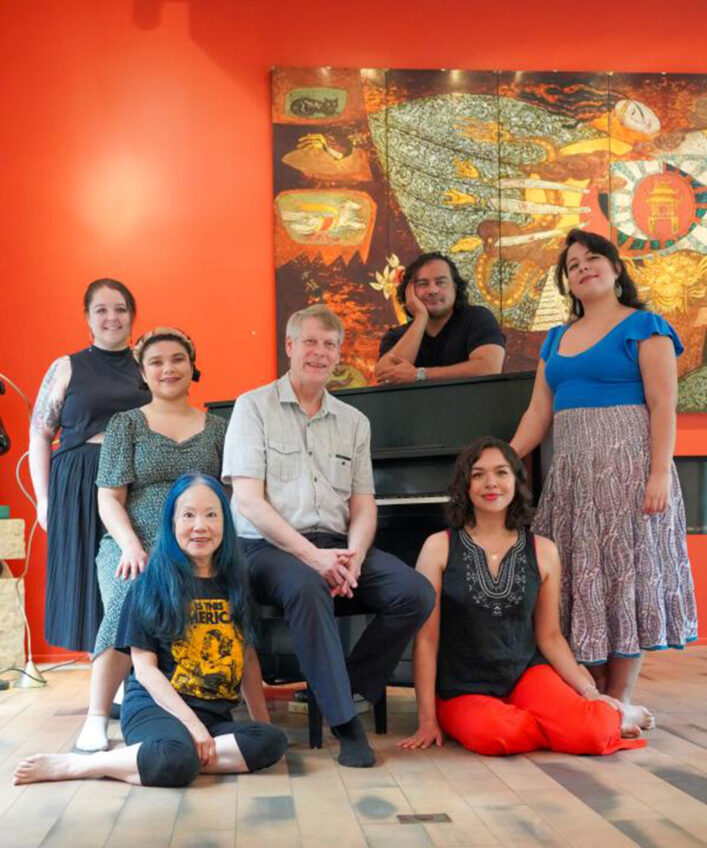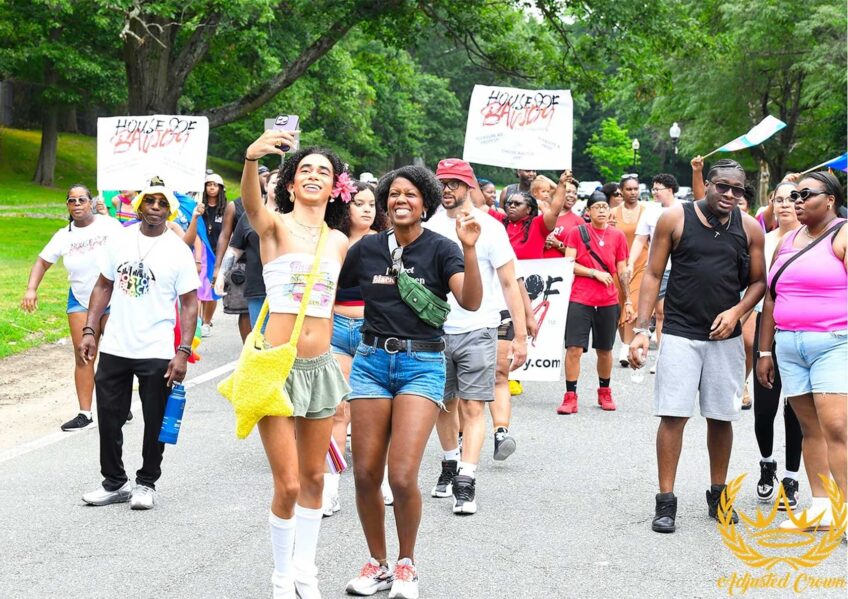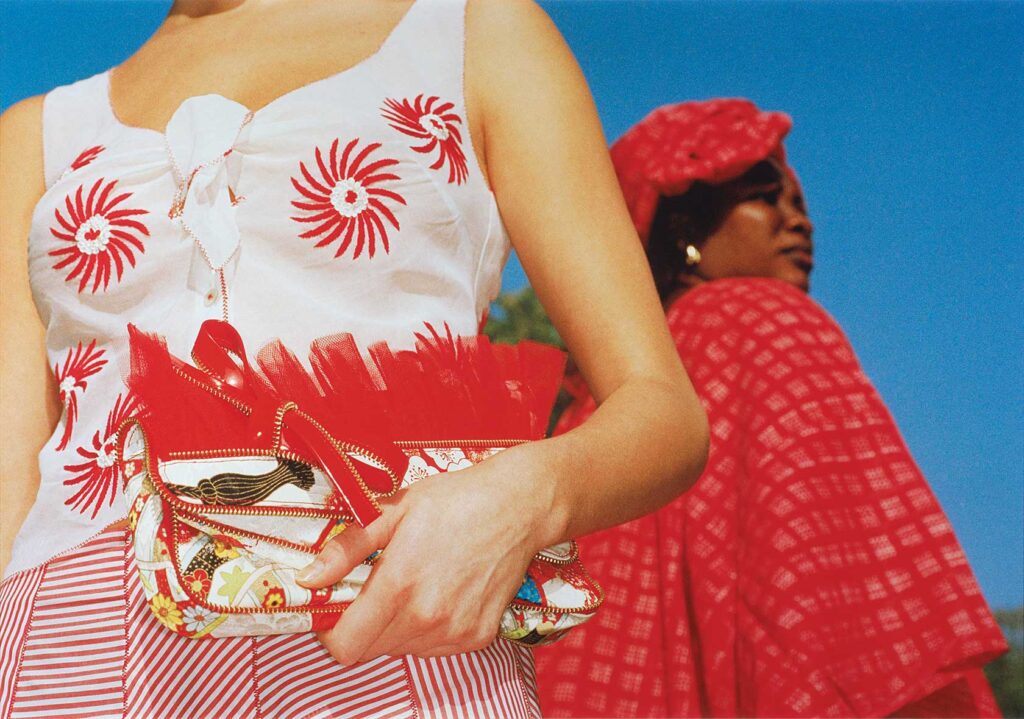
Banner Arts & Culture Sponsored by Cruz Companies
Dressing up is steeped both in fantasy and reality. Children dress up as cops and queens and bring their fantasy selves to life with badges and tiaras. In adulthood, sartorial choices tend to be less about play and become more pragmatic. Grownups tend to dress for the roles they inhabit: lover, worker, parent. Yet, the art of dress doesn’t have to be merely functional. It can be beautiful, and at times, political. The Museum of Fine Arts Boston’s exhibition, “Dress Up,” explores the relationship between fashion and jewelry while weaving themes of aesthetics, class and identity politics.
“Dress Up” is a collaborative effort between Emily Stoehrer, the museum’s jewelry curator, and theo tyson, the fashion curator. During a private walkthrough of the exhibition, Stoehrer says this show was the first at the MFA to combine fashion and jewelry. More than 150 objects are on view, including photographs, costume jewelry, clothing, accessories and shoes, most of which are new to the museum’s collection.
The exhibition, on view through Sept. 2, spans two rooms and a connecting hallway. The installation is divided into eight sections that weave viewers through the overlap of baubles and sequins and sparkles and political commentary. British designer Alexander McQueen’s “God Save McQueen’’ dress, the red AIDS ribbon that was ubiquitous in the ’90s, and a tiara with Swarovski crystals are all political symbols. The three pieces are presented in proximity to one another, asking the viewer to reflect on the power of the political in what they choose to wear.
Local designers are highlighted throughout the exhibition, including an Indigenous jewelry designer from Shrewsbury, Tiffany Vanderhoop. A sequined gown by Sally LaPointe, a fashion designer from Marblehead, is on view near two dresses worn by Boston’s own queen of disco (and sequins), Donna Summer. A pair of shoes once worn by Summer are also on display.
Tyson secured three of Donna Summer’s dresses and two pairs of shoes at a Christie’s auction to add to the museum’s permanent collection.
In additional displays, there’s a liquid gold dress from the 1980s by American-born designer Bob Mackie, along with another McQueen creation. There are nods to children playing dress-up, including Minnie and Mickey Mouse details and whimsical Disney patterns. There are other sections that highlight costume jewelry, which Stoehrer describes as a “great democracy.”

“All My Ancestors Are Watching” earrings by Tiffany Vanderhoop. Brass, glass seed beads. PHOTO: © MUSEUM OF FINE ARTS, BOSTON
Stoehrer says, “By the time the world wars start and end, costume jewelry really becomes this industry. And because America is cut off from Europe during those years, it really blossoms.” She continues, “Immigrants are coming with skills in making jewelry from Europe and elsewhere and coming to make more mass-produced materials in Providence.”
Providence was known as the jewelry capital of the world by the 1960s, and the demand for costume jewelry was growing. Meanwhile, as Hollywood’s influence expanded throughout the 20th century, audiences wanted to adorn themselves like the stars they watched on screen.
On a phone call, tyson says they hope visitors looking at the sequins, sparkles, colorful jewels and clothing get inspired to try something new with their outfits.
“I hope people have fun getting dressed again,” tyson says. “Fashion matters, and it has more to do with humanity than vanity.”

